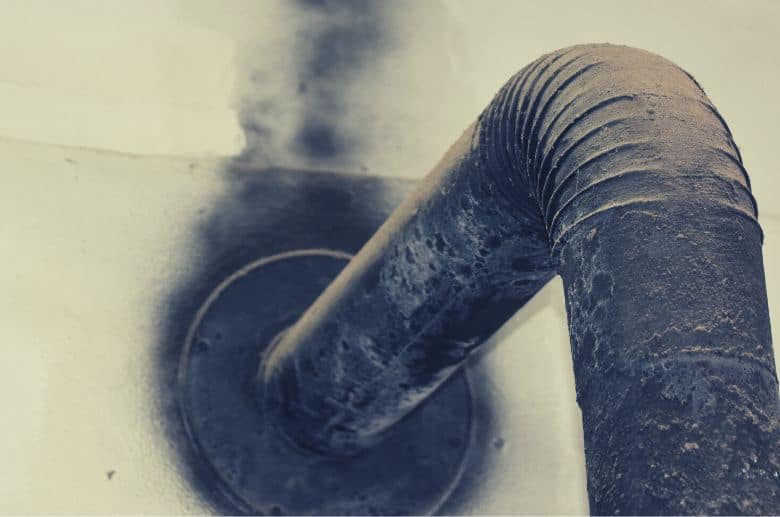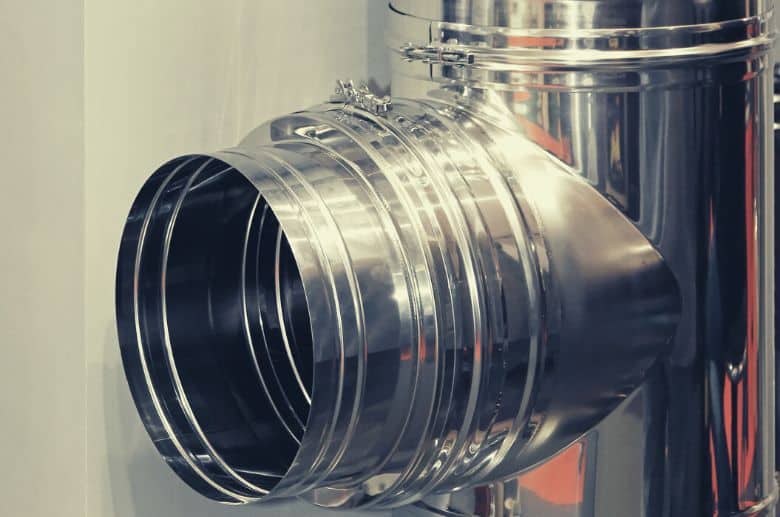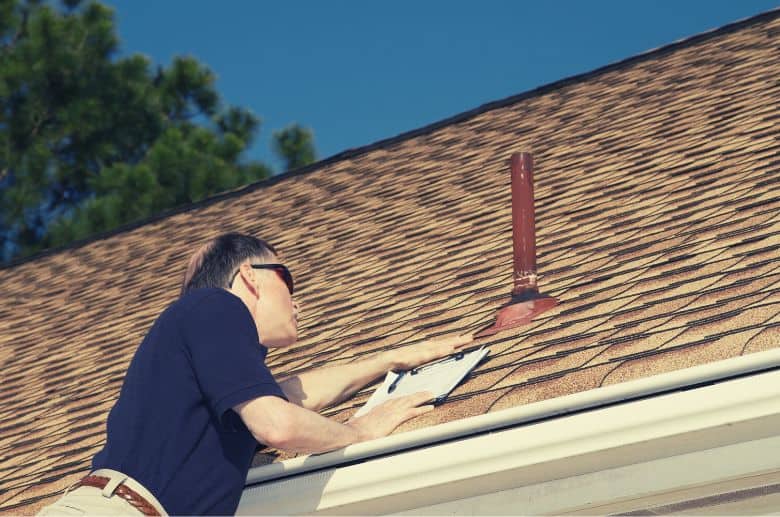A chimney thimble is an integral part of your home’s ventilation system. It helps keep smoke and fumes from entering your home and protects the chimney from weather damage.
If you don’t have a thimble, you should consider installing one. They’re affordable and easy to install and can help improve your home’s airflow.
To help you, we’ve put together this quick guide on everything you need to know about thimbles.
What is a Chimney Thimble, and How Does It Work?

A chimney thimble is a metal or clay sleeve installed around a chimney’s opening. It helps to create a tight seal between the chimney and the surrounding structure, which prevents heat and smoke from escaping. Chimney thimbles are typically made of stainless steel that can withstand high temperatures.
Thimbles are a vital part of the chimney system, as they help to improve the performance of the fireplace or stove. By providing a route for air to travel up the chimney, thimbles help the draft to move more efficiently. This, in turn, means that your fire burns more evenly and with less smoke.
A well-sealed chimney will draft better, making it more efficient at drawing smoke and fumes up and out of the home. In addition, a well-sealed chimney will also help to prevent heat loss in your home.
There are several instances where homeowners may need to install a chimney thimble.
- One common reason is when the original thimble becomes damaged or deteriorates over time. If there’s a gap or opening around the chimney, it’s essential to have it sealed off to prevent heat loss and inefficient drafting.
- Another reason you may need to install a chimney thimble is if you’re changing the fireplace or stove. For example, if you’re converting a wood-burning fireplace to gas, you’ll need to install a gas-specific thimble. If you’re replacing an old stove with a new one, you may also need to replace the thimble to ensure it fits properly.
Thimbles are typically installed by a professional, requiring special tools and knowledge to install them correctly. However, some thimbles are made for do-it-yourself installation.
If you’re considering a DIY installation, you’re in for a treat because we cover that later in the guide. Read on!
——
Do You Need to Hire Chimney & Fireplace Expert?
Get free quotes from qualified experts near you. No commitment required!
——
Types of Chimney Thimbles
thimbles come in two main varieties: clay and stainless steel chimney thimbles. These thimble materials have pros and cons, which we’ll discuss below.
Clay Chimney Thimbles
Clay thimbles are the more traditional of the two materials. These thimbles have been used in fireplace and stove construction for many years.
Clay thimbles offer good heat resistance, but they are not as durable as stainless steel thimbles.
Pros
- Good heat resistance
- Inexpensive
Cons
- Not as durable as stainless steel
- It can crack or break if not installed correctly
Stainless Steel Chimney Thimbles

Stainless steel thimbles are a newer invention, but they have quickly become the preferred choice for many homeowners.
Stainless steel thimbles offer superior durability and heat resistance compared to clay thimbles.
Pros
- Won’t break or crack, as clay thimbles can
- Withstands high temperatures
- Resists corrosion
- Easy to clean
Cons
- More expensive than clay thimbles
- It can be challenging to install without the help of a professional
If you’re looking for a durable and long-lasting chimney thimble, stainless steel is the way to go.
Remember that stainless steel thimbles can be more challenging to install than clay thimbles, so it’s essential to consult a professional before beginning your project.
Should an Unused Chimney Thimble be Sealed?
An unused thimble should be sealed because it can let in cold air and make your house colder, and it can also let in hot air and make your home hotter.

If you are not using your fireplace, it is vital to seal off the thimble. This will help keep your home at a comfortable temperature and save you money on energy bills. There are two ways to seal a chimney: with caulk or with a chimney balloon.
- Caulk is the best way to seal a chimney thimble because it is permanent and will last for many years. You can buy caulk at any hardware store. To apply caulk, put a small amount around the edge of the thimble and smooth it out with your finger.
- Chimney balloons are thick, durable, and can be inflated to fit snugly in the thimble. When not using your fireplace, inflate the chimney balloon to seal off the opening. Chimney balloons are not permanent, but they can last for several years.
Whether you use a caulk or a chimney balloon, sealing an unused thimble will help keep your home comfortable and save you energy bills.
——
Do You Need to Hire Chimney & Fireplace Expert?
Get free quotes from qualified experts near you. No commitment required!
——
How Do You Seal a Chimney Thimble?
So, how do you seal a thimble? The best way will depend on the materials of your chimney thimble and the surrounding area. If you have a metal thimble, you will want to use a high-temperature sealant rated for metal.
If you have a brick or stone fireplace, you can use a non-flammable sealant made for bricks and stones.
To seal the chimney thimble, you’ll need the following:
- Hammer
- Chisel
- Trowel
- Putty knife
- Refractory mortar
DIY DISCLAIMER
Before you start, ensure the area around your thimble is well-ventilated. You will be working with materials that release fumes, so it’s crucial to have good airflow.
Wear gloves and a dust mask when working with the refractory mortar. This will protect your hands and lungs from the harmful particles in the mortar.
Step 1: Prepare the Thimble
If the thimble is new, skip to Step 2. If the thimble is old, you’ll need to chisel away any old mortar before applying the new sealant.
Use a hammer and chisel to remove any old mortar from around the base of the chimney thimble. Be careful not to damage the thimble itself.
Step 2: Apply Refractory Mortar
Now it’s time to apply the refractory mortar. First, mix the mortar according to the manufacturer’s instructions. Then, use a trowel to apply a generous amount of mortar around the base of the chimney thimble.
Use a putty knife to smooth out the mortar and create a seal between the thimble and the surrounding area.
Step 3: Let It Dry
Once you’ve applied the refractory mortar, let it dry according to the manufacturer’s instructions. In most cases, you’ll need to wait at least 24 hours for the mortar to dry completely.
After the mortar has dried, you can use your fireplace as usual. The chimney thimble is now sealed and protected from the heat of the fire.
Please contact a certified chimney professional if you have questions about sealing a chimney thimble. They will be able to help you choose the suitable sealant and give you tips on how to apply it correctly.
How Often Should a Chimney Thimble be Inspected and Cleaned?

Like your chimney, your thimble should be inspected and cleaned annually. Depending on how often you use your fireplace, you may need to have the thimble inspected and cleaned once a year or more.
Please contact a certified chimney professional immediately if you notice any cracks or damage to the thimble. They will be able to repair or replace the thimble as needed.
How Much Does it Cost to Install a Chimney Thimble?
The average cost to install a chimney thimble is about $2500. The price will vary depending on the materials of your chimney and the surrounding area.
There will be additional costs if you need to have the chimney inspected or cleaned. Contacting a certified chimney professional for an estimate is always a good idea. They can ensure you get the best possible price for your thimble installation.
Conclusion
Chimney thimbles provide many benefits, including:
- Protection of the masonry chimney from heat and flames
- Prevention of sparks from flying out of the chimney and landing on roofs or other buildings
- Reduced risk of chimney fires
- Increased efficiency of the fireplace insert
- Improved draft of the fireplace
If you are considering installing a thimble, consult a professional to ensure that it is the right choice for your home.






